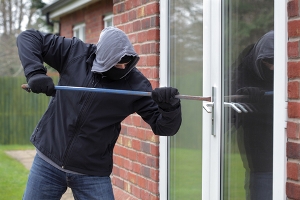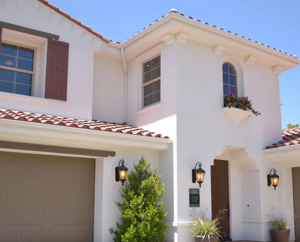Reinforce Your Door with the Door Devil
Unfortunately, there is no such thing as a totally burglar-proof home, but there is also no burglar who can get into any home. By taking a few steps and using some specific security measures, you can make your home ALMOST burglar-proof.

When most homeowners consider security, they usually only think of a few items. However, you might not realize that things like shatter proof glass is on the market. There are also surveillance cameras that are real and fake, which can be installed. That certainly will help deter a burglar.
And while deterrence is huge, the most important aspect of home security is “hardening” the home to prevent access. Doors are the most common method of burglar entry and most doors significantly lack reinforcement.
There are a few critical things that you can do with your front and back door. If you have a typical door, its frame made of pine and it can definitely get kicked in. It doesn’t even take a lot of strength to get through a door, and most adults would have the strength to do it if they know how.
A normal door closes with a latch that has two or four small screws that go through a weak strike plate. This is attached or a pine door frame, which might be only ½” to ¾” thick. Keep in mind that a child can kick through pine that is ½” thick, so it should be no surprise that it’s so easy to kick through a door.
Here’s how to Secure Your Doors!
As in the video above, this is where a device like the Door Devil Anti-Kick Door Jamb Kit comes in handy. This kit has a bar that is over a foot long and is 1/16th inch heavy steel. It is installed right on the door jamb over the strike plates that are already there.
The kit includes:
- 13-inch strike plate with EZ mounting tabs
- Door plate and hinge plate
- Heavy duty mounting screws in two different sizes for extra strength
- Installation drill bits
It only takes about 15 minutes to install the Door Devil, and once it is installed, you are done. The only other thing you have to do is lock your door.
Though door reinforcement is a great thing, just consider that it is only a single layer of security, and you should consider complimenting this with other types of home security including motion detection lights, surveillance cameras, and home security systems. Remember, most burglars aren’t extremely skilled, nor are they extremely smart. If they can’t get through a door with a couple of kicks, they will move on to the next house.
Robert Siciliano is a home and personal security expert to DoorDevil.com discussing Anti-Kick door reinforcement on YouTube. Disclosures.



 But even in this day and age of connectedness, the best security system begins with the front door. That’s because, essentially, the door is potentially your home’s weakest link—no matter how high tech the alarm system is.
But even in this day and age of connectedness, the best security system begins with the front door. That’s because, essentially, the door is potentially your home’s weakest link—no matter how high tech the alarm system is. Deadbolt Strike Plate
Deadbolt Strike Plate A crook will grab a small safe, not knowing that it contains sentimental items to the owner, and hoping it contains jewelry items he could resell.
A crook will grab a small safe, not knowing that it contains sentimental items to the owner, and hoping it contains jewelry items he could resell.

























